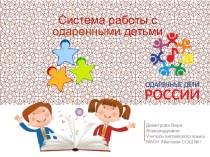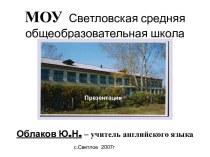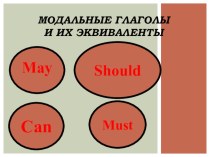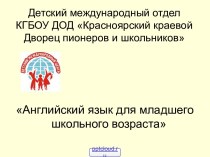- Главная
- Разное
- Бизнес и предпринимательство
- Образование
- Развлечения
- Государство
- Спорт
- Графика
- Культурология
- Еда и кулинария
- Лингвистика
- Религиоведение
- Черчение
- Физкультура
- ИЗО
- Психология
- Социология
- Английский язык
- Астрономия
- Алгебра
- Биология
- География
- Геометрия
- Детские презентации
- Информатика
- История
- Литература
- Маркетинг
- Математика
- Медицина
- Менеджмент
- Музыка
- МХК
- Немецкий язык
- ОБЖ
- Обществознание
- Окружающий мир
- Педагогика
- Русский язык
- Технология
- Физика
- Философия
- Химия
- Шаблоны, картинки для презентаций
- Экология
- Экономика
- Юриспруденция
Что такое findslide.org?
FindSlide.org - это сайт презентаций, докладов, шаблонов в формате PowerPoint.
Обратная связь
Email: Нажмите что бы посмотреть
Презентация на тему по английскому языку на тему Ложные друзья переводчика
Содержание
- 2. The aim: to analyze interlingual homonyms
- 3. Tasks of work:to study the concept of
- 4. The ways of origin of "false friends":a
- 5. The types of "false friends":English words, not
- 6. Causes of mistakes in translation:belief in monosemantic
- 7. Recommendations for students:always be careful and recheck
- 8. Task № 1. Translate the words:artist
- 9. Task № 2. Choose the correct translation of the word:
- 10. Students’ understanding of "false friends" outside of the context
- 11. Students’ understanding of "false friends" in the context
- 12. Students’ understanding of the offered slang expressions in percent
- 13. Students’ understanding of the offered slang expressions in percent
- 14. Students’ understanding of the offered slang expressions in percent
- 15. Students’ understanding of the offered slang expressions in percent
- 16. Students’ understanding of the offered slang expressions in percent
- 17. Students’ understanding of the offered slang expressions in percent
- 18. Students’ understanding of the offered slang expressions in percent
- 19. Students’ understanding of the offered slang expressions in percent
- 20. Conclusions:"False friends" in English and Russian were
- 21. Скачать презентацию
- 22. Похожие презентации
The aim: to analyze interlingual homonyms in the English language and to identify the main peculiarities of this phenomenon.
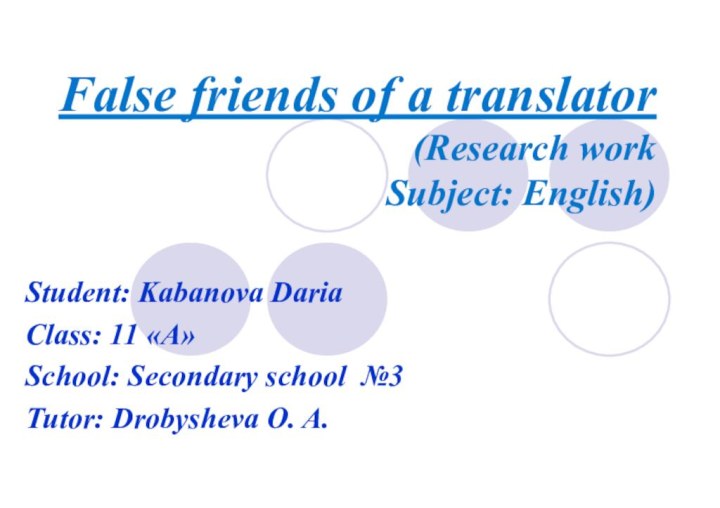

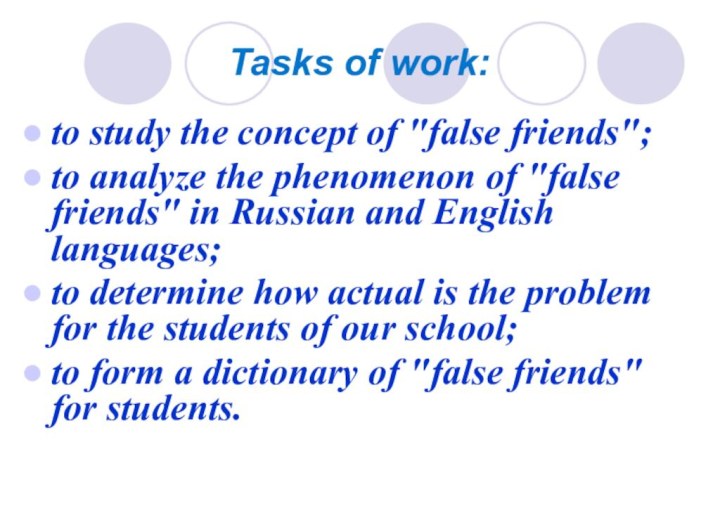



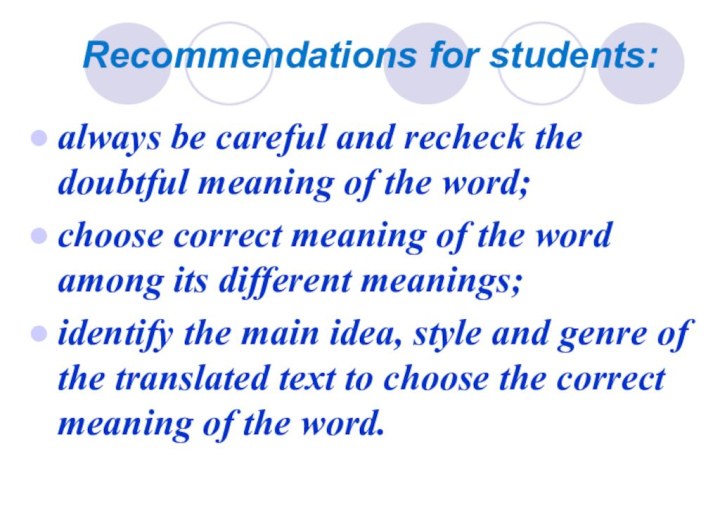

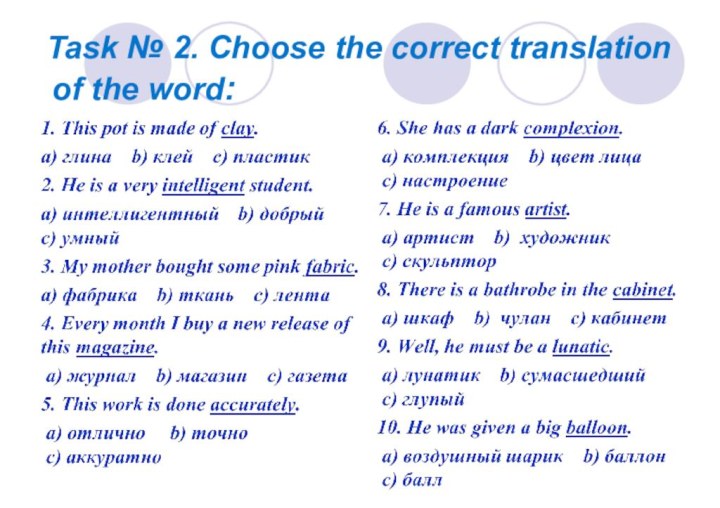
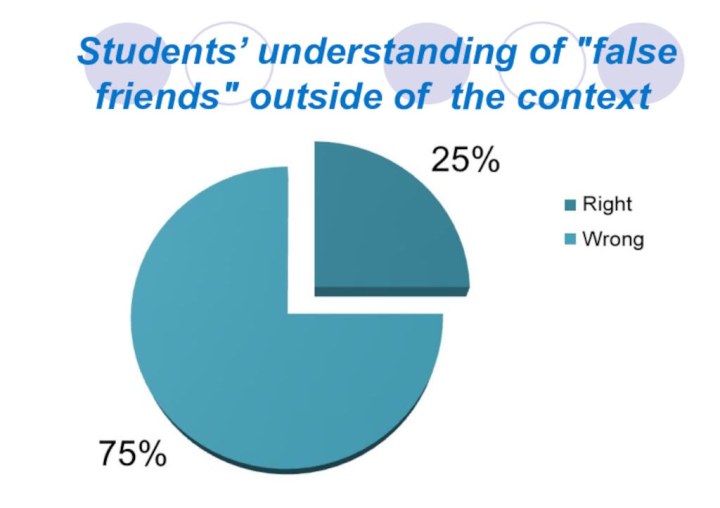


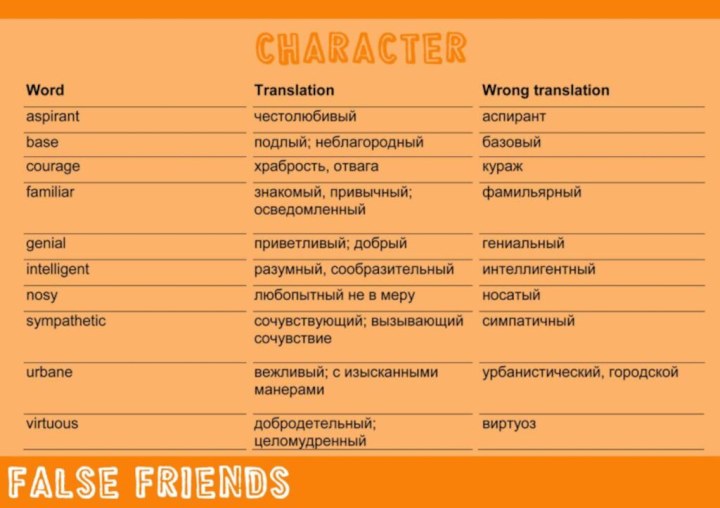

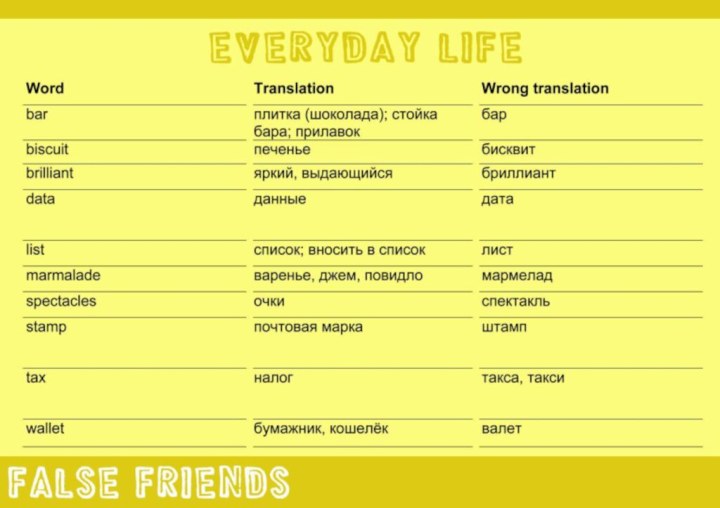

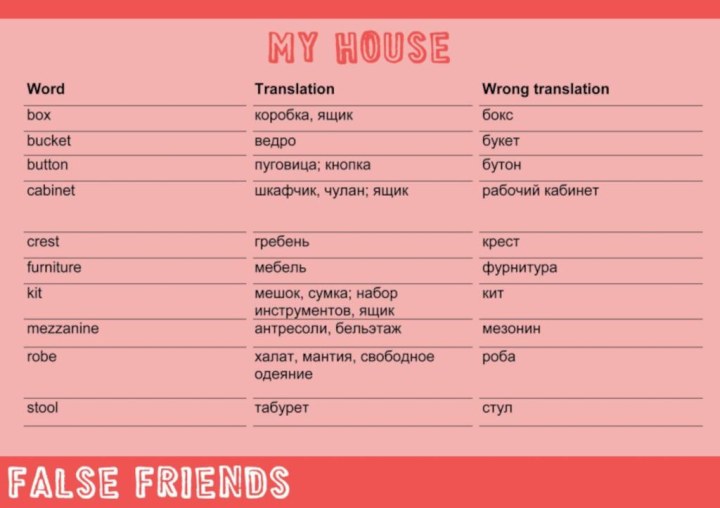
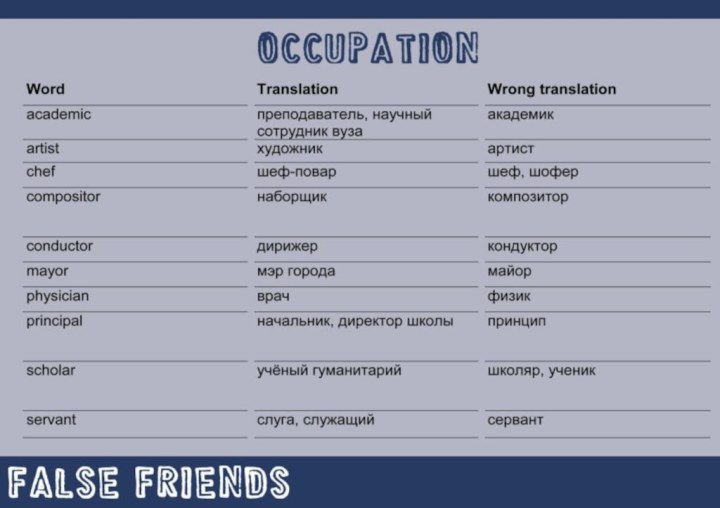
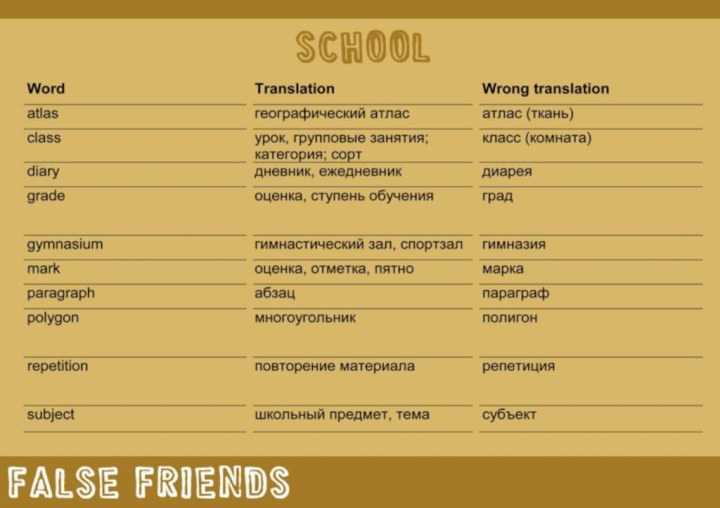
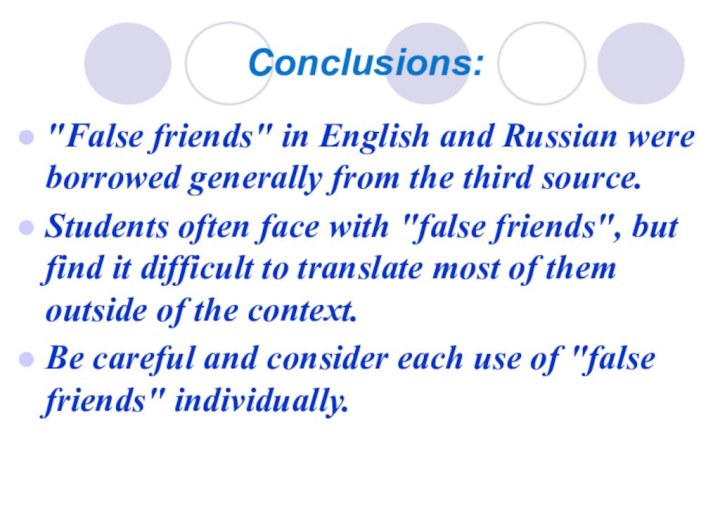

Слайд 3
Tasks of work:
to study the concept of "false
friends";
to analyze the phenomenon of "false friends" in
Russian and English languages; to determine how actual is the problem for the students of our school;
to form a dictionary of "false friends" for students.
Слайд 4
The ways of origin of "false friends":
a coincidence;
borrowing words with a loss of their own meaning
and an appearance of different meaning in new language;a parallel borrowing;
in the process of self-dependent development of the languages.
Слайд 5
The types of "false friends":
English words, not coinciding
with Russian words meaningfully;
English words, partly coinciding with Russian
words meaningfully;English and Russian words, differing in grammatical form;
English and Russian words, differing in emotional way.
Слайд 6
Causes of mistakes in translation:
belief in monosemantic meanings
of the words;
wrong use of analogy;
too specific translation of
words;the inability to find a correct meaning for English words in Russian language;
ignorance of the rules of presentation of the material in Russian language.
Слайд 7
Recommendations for students:
always be careful and recheck the
doubtful meaning of the word;
choose correct meaning of the
word among its different meanings;identify the main idea, style and genre of the translated text to choose the correct meaning of the word.
Слайд 8
Task № 1. Translate the words:
artist –
________________________________________
brilliant – ______________________________________
cabinet – _______________________________________
data – _________________________________________
familiar – ______________________________________
genial
– ________________________________________list – ___________________________________________
repetition –______________________________________
servant –________________________________________
wallet –_________________________________________
Слайд 20
Conclusions:
"False friends" in English and Russian were borrowed
generally from the third source.
Students often face with "false
friends", but find it difficult to translate most of them outside of the context.Be careful and consider each use of "false friends" individually.

